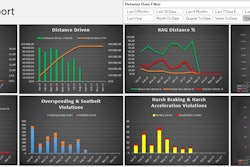
Editor’s note: This is part of the second article in a three-month series examining the driver shortage, measuring its impact on trucking operations and exploring methods to mitigate the crisis.

“Some fleets mistakenly believe the economics of turnover outweigh the benefits of retention.”
– Michael Fisk, Roadmaster Group
“Some fleets mistakenly believe the economics of turnover outweigh the benefits of retention,” says Michael Fisk, director of hiring, marketing and driver development for Glendale, Ariz.-based Roadmaster Group.
If it costs around $5,000 to hire a driver – including marketing, orientation and training, for example – but it’s going to cost $15,000 a year to retain that driver, some fleets might look at those numbers “and decide it’s cheaper to lose the driver and replace him,” he says. But it’s critical that fleets look at other factors, such as safety, he cautions. “You have one accident, and it could wipe out any savings,” he says.
Some carriers choose to embrace turnover because “they want to keep their cost at a level,” says Ken Deocharran, president of Express Trucking & Courier. “If they are running at 30 [cents per mile], they don’t want a driver at 40,” he suggests.
But in today’s competitive market, turning a blind eye to the true costs of turnover might mean carriers lose out on plentiful freight and quality drivers. “Turnover this year is a cost you want to avoid,” says Gordon Klemp, president of the National Transportation Institute. “If you get a lot of churn, it’s going to be hard to replace him with an equal driver.” Klemp equates the situation to what the industry experienced in late 2004 and early 2005, when turnover at large truckload carriers reached more than 130 percent. “It’s going to be a dogfight,” he says.
But if carriers decide to continue turning over drivers, that’s fine with Deocharran. “It’s a good thing for us, because then we pick them up,” he says.











